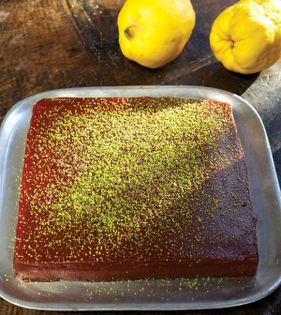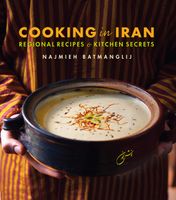Advertisement

Preparation info
- Makes
12 to 18
servings - Difficulty
Complex
- Ready in
5 hr
Appears in
Published 2020
I love Persian quince paste. Its a specialty of Gilani cooking in the Caspian region, where wild quince trees are found. The cultivated variety probably originated thereabouts, with local names such as shal-e beh in Gilan and Mazandaran and ayva in Astara. The commonly used name, however is loz-e beh. Loz in Persian, from which comes the word “lozenge” in English, refers to the diamond shapes the paste is cut into, and “beh” means “quince”). These days the best q


